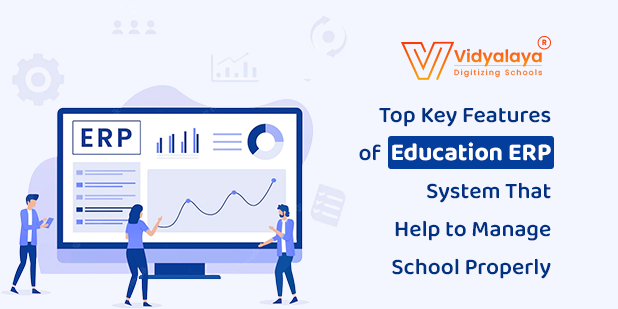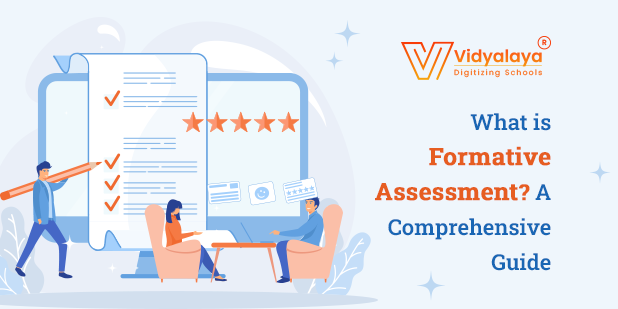Indian Education sector is regulated by NAAC (National Assessment and Accreditation Council) and the committee implements several initiatives to enhance the educational standards. Any organization in any sector undergoes different types of audits, as the auditing system brings efficiency and discipline in the workflows, apparently improving the business. In the education system, the NAAC proposes Academic and Administrative Audit (AAA) to evaluate different institutional processes through a systematic internal and external reviewing system. Let’s learn how this audit monitors the system, how it improves efficiency quotient, and how ERP products can contribute a significant share in the entire auditing process in this EdTech blog.
What is Academic and Administrative Audit (AAA)?
Academic and Administrative Audit (AAA) is a peer review process in the educational system that includes self-study and site visits by internal and external peers of the institute. Purpose behind this is to promote and encourage programs, departmental internal quality process assessments based on predetermined benchmarks. It also suggests improvements to produce, enhance, and ensure the quality of the entire system. Let us divide the term (AAA) and explore the meaning:
1. Academic Audit:
Academic Audit is a great way to enhance the educational quality of an institute. It focuses on ensuring quality standards and implementing improvements in the educational workflows of the institute.
2. Administrative Audit:
This deals with administrative aspects and evaluates the same on the scales of efficiency and effectiveness. Administrative audit aims on building and evaluating policies, strategies, and workflows of the institute.
How to conduct Academic and Administrative Audit (AAA)?
1. Self-Study Report Creation:
Every department is asked to prepare a self-study report under the 7 NAAC criteria. This includes all supporting activities and processes of the department. The report should contain a detailed focus on several points, but some of the few are:
- Exceptional approach in teaching, exams, and assessment process.
- Daily workflow documentation and performance of faculty members.
- Teaching plans and strategies
- Implementation of strategies to promote outcome-based education, CO mapping and others.
- Workshop, conference, and seminars arranged, if any
- Soft-skills, life skills, personal grooming activities, along with social activities
- Alumni programs
2. Periodicity:
Although there is no hard-and-fast rule about the periodicity of the AAA, some institute conduct this audit every year and some conduct once in three to five years. It is recommended that an institute should execute internal reviews annually and include external peers in every three to five years.
3. Selection of Peers:
To be members of peers of Academic and Administrative Audit, there are no specific criteria or qualifications. Only thing is that the member or peer should have a hold on college faculty in the relevance of their academic distinctions, professionalism and experience in the sector.
4. Internal and External Approach towards:
IQAC team conducts an internal review of the report and an external review is conducted by university or other members.
5. Peer Review:
After Self-study report creation for individual departments in the institute, the relevant documents and evidence are also attached. Internal audit team evaluates all these documents and prepares another report after completing the assessment based on their observations. It is then submitted to the college principal, who goes under thorough evaluation, and then it is submitted to IQAC for further implementation of the suggestions. Later, IQAC also reviews the suggestions submitted by the internal audit team and implements them in their self-study report.
6. External Audit Team Significance:
They conduct external audit after alterations of the report based on recommendations. After a detailed discussion with the principal of the institute and IQAC team members, they submit a comprehensive report to the institute in the exit meeting.
7. Implementation of recommendations from Audit Team:
External audit team come with some suggestions which need to pass IQAC regulations for further implementation. Later, they have a detailed plan of how various suggestions can be implemented across various departments to achieve the goals.
How Vidyalaya ERP support to carry Academic and Administrative Audit (AAA)?
Vidyalaya ERP is full of futuristic features that are completely in compliance with (AAA) aspects. Let us learn how it supports the audit:
1. Organized Admission Process:
Vidyalaya ERP system enhances the admission process and offers a complete holistic view of the entire admission system. Right from admission enquiries, application processing, tracking, and confirmation of admission, our ERP does it all. Also, the administration panel can get instant and real-time reports that will give you insights of the process.
2. One-stop Fee Management:
One can manage financial transactions seamlessly. It tracks and records every financial record and enhances the security with a secured payment gateway. This automated financial management can play a significant role in peak enrolment period, exam period, and result declaration.
3. Transparent Attendance Management:
Vidyalaya ERP brings complete transparency to the attendance management system with biometric attendance tracking. This way institutions can maintain academic integrity and standards.
4. Robust Examination Process:
Vidyalaya ERP helps to streamline the examination process by making pre-examination arrangements easy and speeding up the post-examination processes like answer sheet checking, preparing scorecards, and distributing to students. Minimum human intervention in these processes brings transparency and efficiency.
5. Reliable Reporting and Dashboards:
Vidyalaya ERP facilitates decision-makers through intelligently designed dashboards and reporting tools. These act as a great auditing tool for them to evaluate students’, and institutions’ performance on different measures. Detailed insights help them to make efficient and faster decisions.
What are the advantages of AAA?
Academic and Administrative Audit (AAA) advantages are manifold but not limited. Some of them are:
- It helps students to eliminate the extra workload and focus on essential aspects required for student’s future perspective.
- It helps teachers clarify their roles and responsibilities in the entire learning process and thus can avoid conflicts.
- Administrative members of the institute can get great insights into the overall quality of the institute, including strengths, areas of improvement, threats, and opportunities.
- For management members, It ensures proper use of resources, processes, systems, and infrastructure so that correct measures are implemented.
Referring to academic terminology, audit means completion of the course of study. Here, a student’s performance or grades are not evaluated but an Academic Audit evaluates the effectiveness of educational institutes’ academic and administrative operations. NAAC aims to reform the academic processes, evaluate the progress, and implement various things to support the reforming.
Vidyalaya, a leading EdTech provider in India as well as a global educational platform, facilitates higher education institutes with prominent EdTech products. Our products are 100% compliant with NAAC standards and greatly contribute to implementation and enhancement of them. Hope you have understood how our ERP can assist you in following the academic and administrative audit (AAA) regulations. So, what are you waiting for? Dominate your academic and administrative excellence with the help of our Vidyalaya School ERP product!































